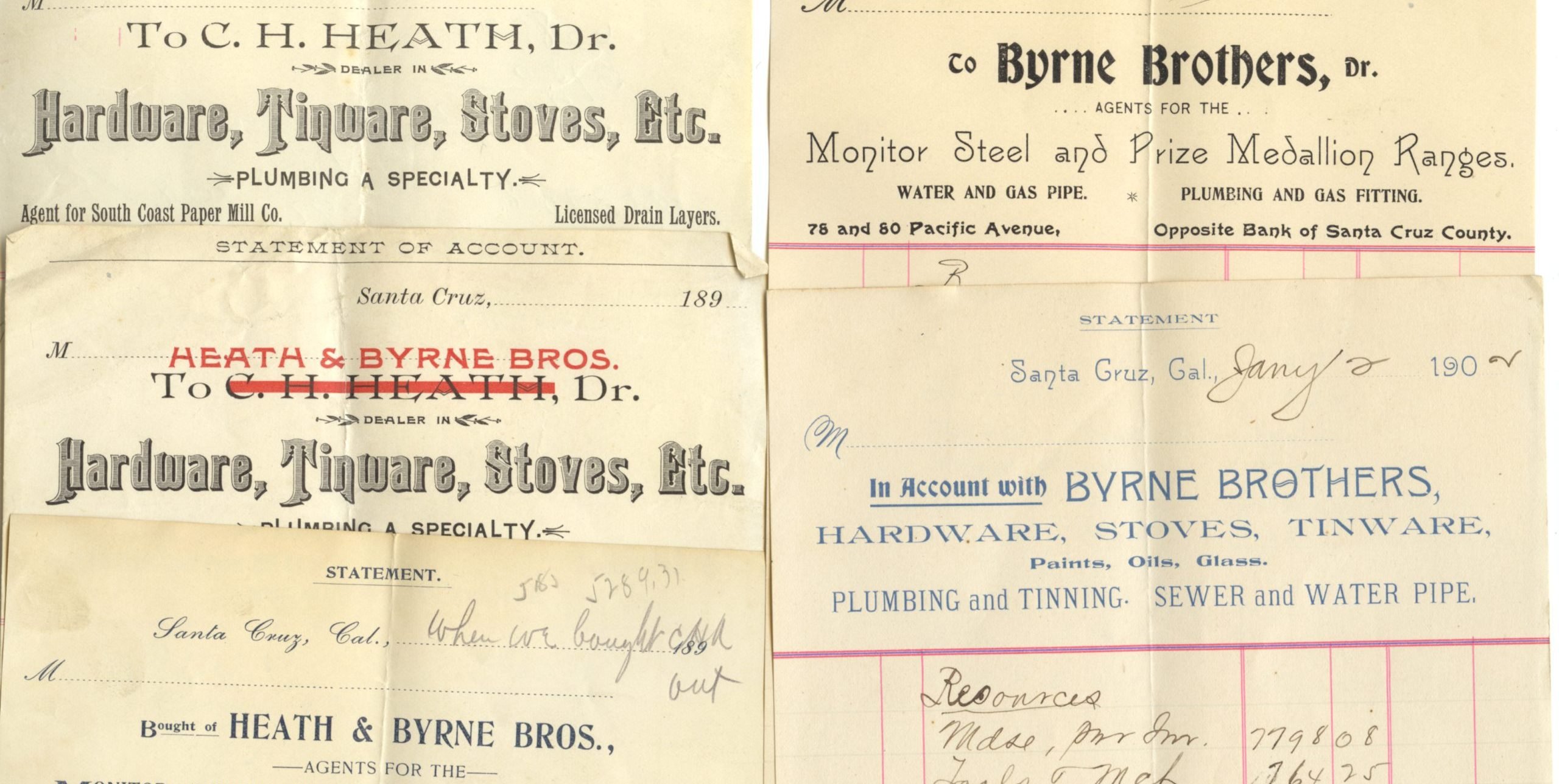Part II of a series on the story of Byrne Bros hardware. You can read Part I here.
My Aunt Cathy tells a story of the closing of Byrne Bros hardware in 1967, and that when my grandfather, John Byrne, decided he was ready to retire, my father, Jack, asked if he should consider taking over the business. His father’s answer was short and definitive: Absolutely not.
My father must have been relieved. He’d already decided to make his own way in the world by moving from Santa Cruz to Palo Alto, escaping his hometown label of “John Byrne’s Son.” But I’ve often wondered what life might have been like had he stayed in Santa Cruz and continued selling nails and tools from the Drennan Building on Pacific Avenue, the unfinished floors covered in sawdust and the ever-present smell of pipe smoke. But I’m getting ahead of myself.
Here is the story of Byrne Bros Hardware in Santa Cruz and Walter and George Byrne.
A Life Beyond Jackson, Michigan
The founding of Byrne Bros hardware in 1895 said more about the desires of a generation of Byrne children to get out of Jackson, Michigan than any calling to sell plumbing, stoves, screws or paint. In the two generations since George Byrne and Sarah Griffing moved west from Windham, CT to Michigan in 1838, most of the Byrne children and grandchildren came to realize their future lay somewhere other than Jackson. George Sr. died in 1844 at age 48, leaving his widow Sarah, 43, with five sons to raise on little other than her deep Baptist faith.
George and Sarah’s eldest surviving child, George Griffing Byrne, did choose to stay in Jackson. After a brief time in eastern Illinois, where in 1856 he met and married his wife, Henrietta Earley, George and Henrietta came back to Jackson. There they supported George’s aging mother while raising four sons and three daughters of their own. For 23 years George oversaw the carpentry shop at the Jackson State Prison, a solid, stable and sometimes dangerous endeavor, including an attempt on his life by one of the inmates in 1883.

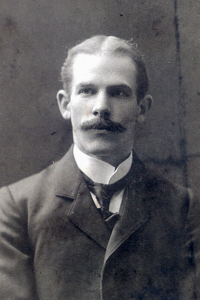
While George and Henrietta raised their children, George’s brothers were looking for greener pastures. Rufus, the second youngest, had been sent as a child to live with his maternal aunt in Morgan, Ohio. Once he completed his Civil War service in the Union Army, Rufus returned to Jackson, but shortly thereafter moved to Buffalo, NY, where he spent the rest of his life. The youngest brother, Charles, initially settled in Paw Paw, Michigan, where he married and started a family. But after his wife died in the early 1870s, Charles departed for California. Working his way north up the coast from Ventura, Charles spent some time in San Francisco, but eventually settled in Santa Cruz. There he became a hardware merchant, and together with partner Lucien Heath, founded the firm Heath & Byrne Hardware.
The Byrnes of Santa Cruz
Charles must have been a great salesman, for he sold all seven of George and Henrietta’s children on the wonders of California. All eventually moved to the Santa Cruz area, or spent extensive time there. The first to come was George Griffing Jr., who arrived in Santa Cruz in May, 1885. Taking up residence at the YMCA, George organized and led Sunday faith meetings there (sample sermon “The Two Most Important Commandments”), as well as at the First Congregational Church. George was a natural salesman and comfortable as a performer, joining local theater productions as well as a singing quartet. His uncle Charles likely helped launch his career in hardware, though it’s not clear whether George worked directly for Heath & Byrne. By 1888 George had moved to San Francisco, which became his base of operations for several years as a traveling hardware salesman. His territory included Oregon, where he met his future wife, Helen Fidelia Graves. On Dec 17th, 1890, he married the Portland resident, a daughter of New England sea captain Sewell Fogg Graves and Amelia Batchelder.
Walter Charles Byrne, George’s younger brother, came west around 1890, age 22, initially settling in San Francisco. By early 1891 he was in Santa Cruz, involving himself with the local Baptist church while working with his uncle Charles at Byrne & Heath. As an eligible bachelor in his early 20s, Walter made regular appearances in the social columns of Santa Cruz papers, stemming in part from his friendship with Ernest Otto. Otto, who also appears in most of these mentions, would go on to a long career in Santa Cruz as a journalist and local historian. Otto was also close with the Drennan family, and may have played a role in connecting Walter with his future bride, Mabel Drennan. Like many of his siblings throughout the 1890s and 1900s, Walter had almost a dual residency between Jackson and Santa Cruz, beginning with his father’s illness and death in 1891, and lasting until their mother’s death in 1910.

Heath & Byrne Bros Hardware
The story of Byrne Bros Hardware began on July 15th, 1895, when Charles Heath signed a partnership agreement with George and Walter Byrne. The original agreement gave Heath a 2/3 ownership and each of the brothers a 1/6 stake. The Byrnes each contributed $625 in cash and Heath put in $2500. Additionally, Heath committed all existing stock and goodwill to the enterprise. While not party to the agreement, Charles Byrne likely had a role in bringing his hardware-selling nephews together with his former hardware partner. The firm set up shop as Heath & Byrne Bros at 80 Pacific Ave. The brothers immediately began to aggressively market of the business, placing notices in the paper of major improvements underway at the store, and resuming advertising on a daily basis. And in what would go on to become a regular engagement in government and public works projects, they were quickly enlisted to fabricate and install the plumbing for the new Cooper street courthouse under construction (aka The Cooper House), as well as crafting the copper time capsule to be placed in the cornerstone.
At the same time Heath and Byrne Bros were launching their partnership, social columns in the papers regularly contained items mentioning both Mabel Drennan and Walter Byrne. Mabel’s father, Samuel Drennan, had died in 1891, leaving his widow, Louisa Fernald Drennan, and their four teenage children: Edith, Dora, Mabel & Ryland. Sam Drennan came to California in the early 1850s, trying his hand at gold mining before eventually settling in Santa Cruz. A real estate professional and entrepreneur, Drennan acquired multiple downtown buildings and real estate parcels, and was also a partner with Lucien Heath. After Sam’s death, Louisa and family made ends meet through income generated by leases on those parcels with with local merchants. Louisa and her daughters were active parishioners in the rapidly growing First Congregational church. Walter Byrne soon converted from Baptist to Congregationalist, joining weekly services with the Drennans. Walter and Mabel’s courtship lasted several years, and the couple married at the Drennan home at 45 Church street on June 6, 1899.
On Oct 27th 1897, Charles Heath exited his partnership with the Byrne brothers, relinquishing all claims for a $5 gold coin. It’s unclear what might have led him to move on at that moment, but the settlement and transaction were amicable, and his eventual exit was likely part of the original plan.
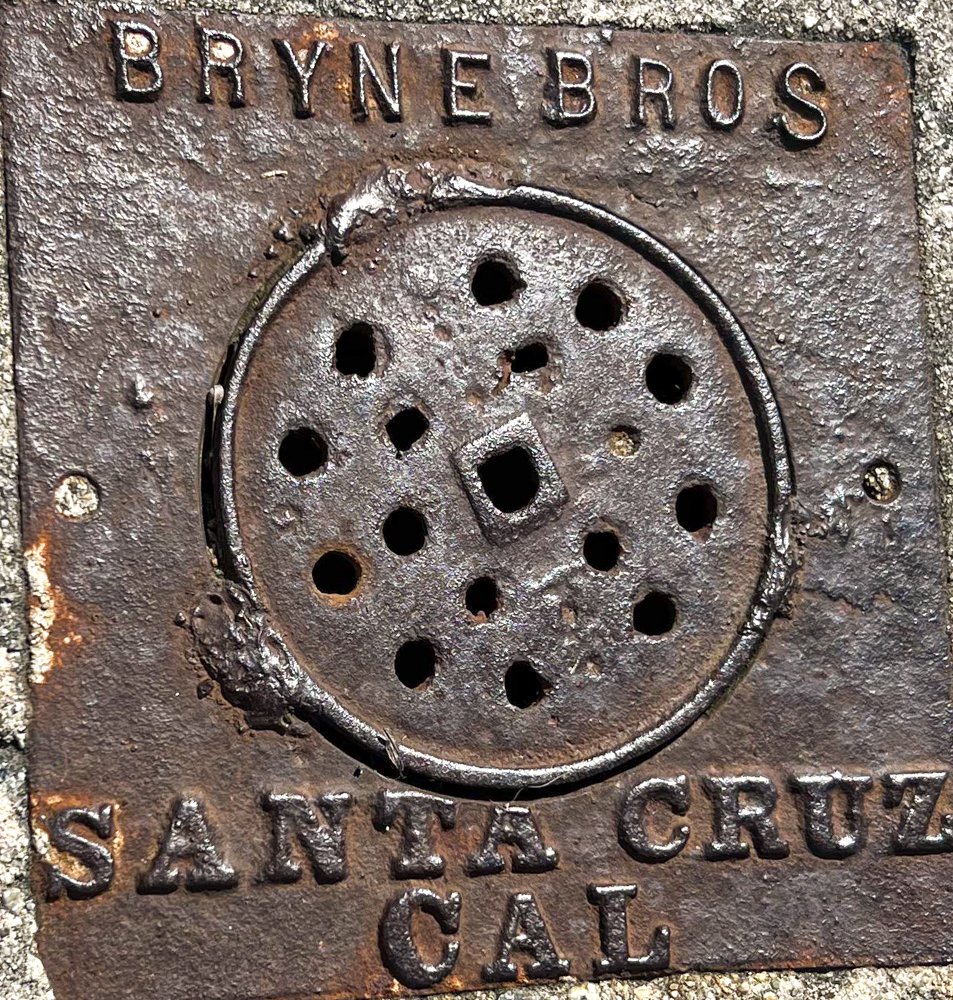
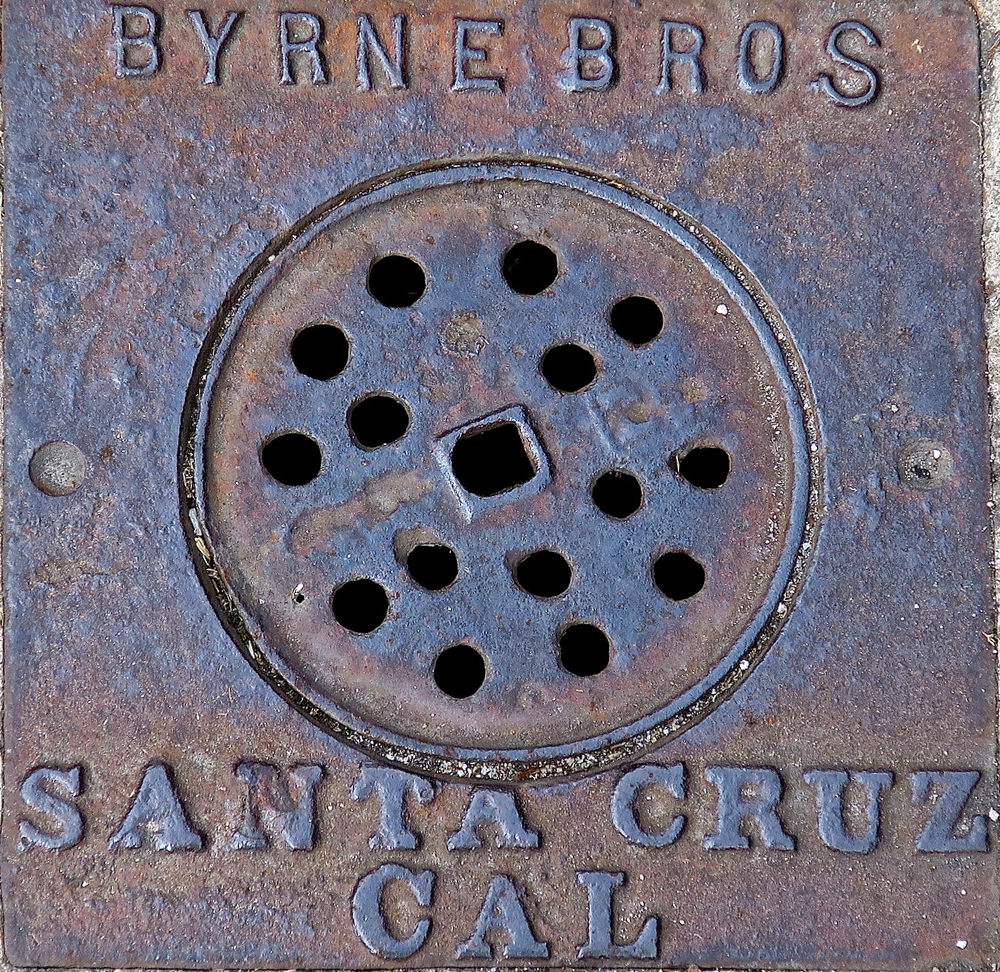
Now fully independent from the Heath family, Byrne Bros grew rapidly in its first decade. In addition to the hardware, tin and stove business, Byrne Bros regularly took on plumbing and sheet metal contracts for construction projects. The firm regularly won contracts for sewer lines, and around Santa Cruz clean out vents branded “Byrne Bros” (and otherwise) began appearing. The brothers used union labor, though in 1902 their contracted plumbers went on a short strike against Byrne Bros for imposing nine-hour workdays on some occasions. And in keeping with the tradition of carpentry in the family, George began crafting and selling Mission style furniture in the front window of the store.

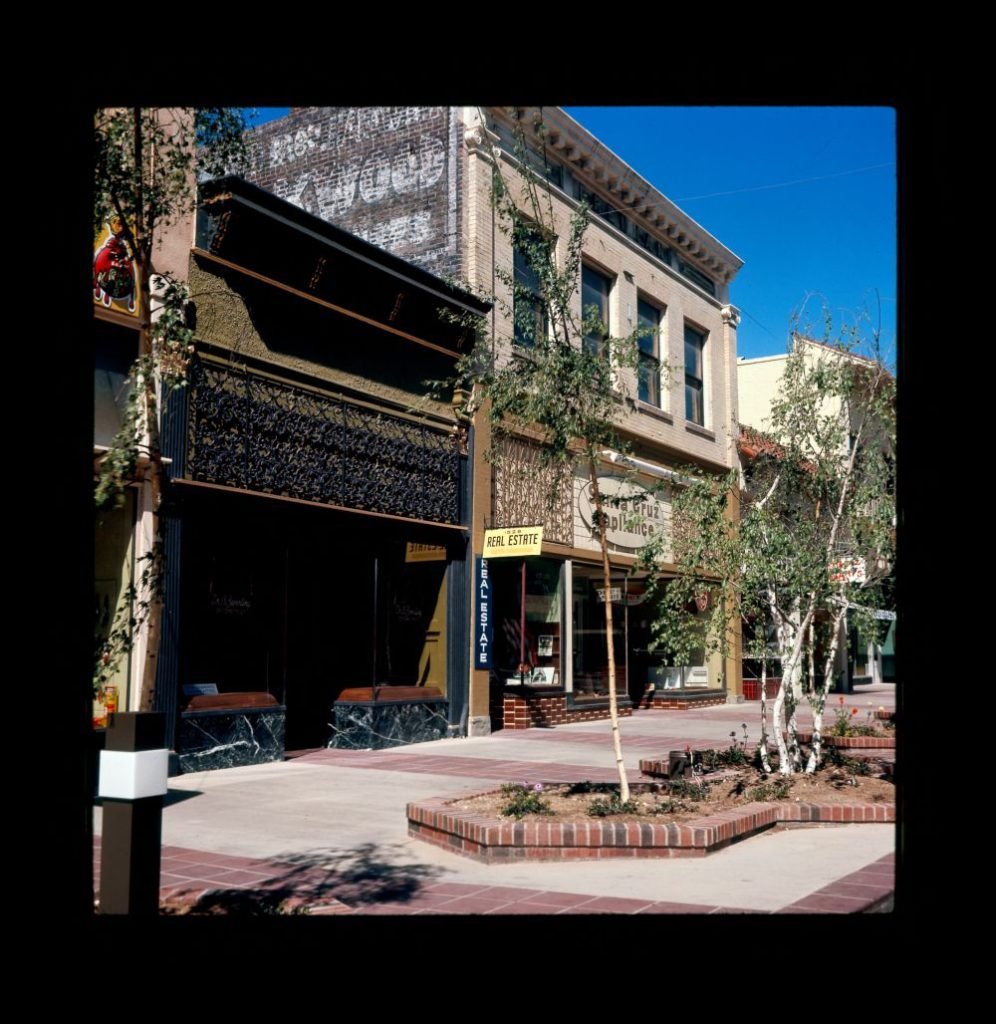
Byrne Bros Builds a New Home
The rapid growth of Byrne Bros prompted a search for a new home for the business. Since 1871, the firm had been located in the McPherson Block at the corner of Pacific and Locust, an 1868 building that is still standing (due in part to the fact it had extra reinforcements added following an earthquake during its construction). In August, 1905, Walter and George signed a 20-year lease agreement for land owned by Louisa Drennan and her four children (one of whom was now Mrs. Walter C Byrne). The brothers committed to construct a new building costing $7,500 on the property at 46 Pacific Ave, then occupied by the San Lorenzo Stables (the Byrne Bros also built a new home for the stables on Front Street). Plans were drawn up by E. L. Van Cleeck, and in spring, 1906, the new Drennan Building was completed and the new home of Byrne Bros.
By 1920, Byrne Bros had been in business for a quarter century and was thriving. Walter and George were both living well and raising large families, with George and family at 320 King Street and Walter and Mabel nearby at 26 Union in a Craftsman-style home designed by George’s son, Walter Graves Byrne. George and Walter also began purchasing other properties downtown, notably the local Pythian Hall in 1920. Their four sisters, Clara, Anna, Susan and Josephine had all made their way west from Michigan, as well as their brother Robert, who had moved on to Florida at that point. Life for the brothers appeared an unqualified success centered around the Byrne Bros business. The story of Byrne Bros would continue until 1967, and the coming years would bring challenges for both families and the business. More on that in an upcoming installment.
